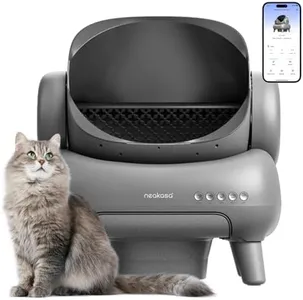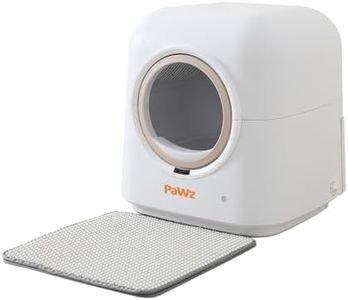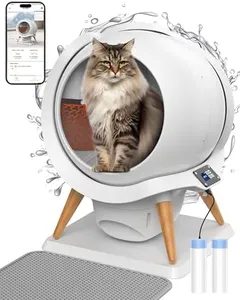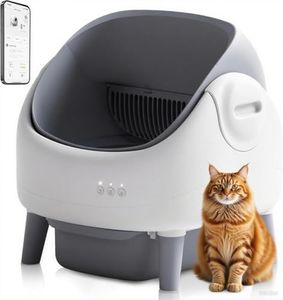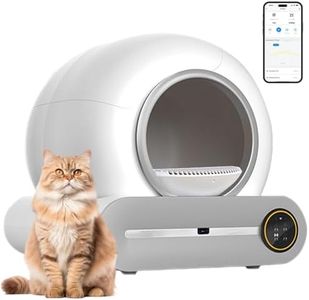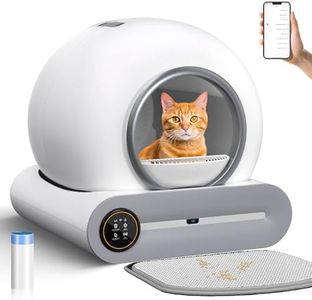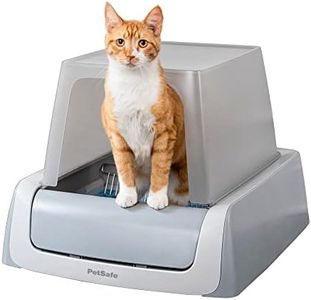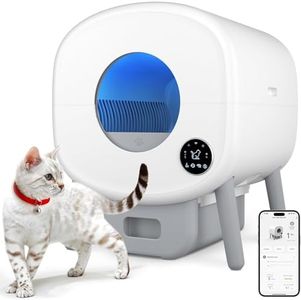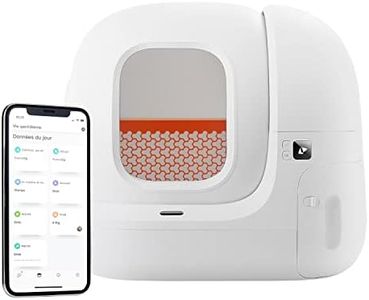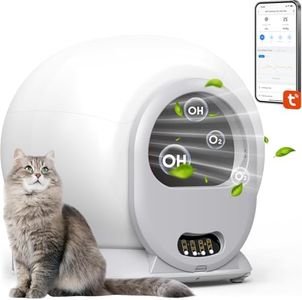We Use CookiesWe use cookies to enhance the security, performance,
functionality and for analytical and promotional activities. By continuing to browse this site you
are agreeing to our privacy policy
10 Best Self Cleaning Litter Boxes
From leading brands and best sellers available on the web.Buying Guide for the Best Self Cleaning Litter Boxes
Choosing a self-cleaning litter box can make caring for your cat much easier and less messy. The key to finding the right one is understanding how different features fit your lifestyle and your cat's habits. It's important to focus not only on how well the device manages waste, but also on how comfortable, safe, and easy to maintain it is for both you and your pet. Comparing the main specifications will help you pick the one that meets your household's needs the best, and ensures your furry friend is comfortable using it.Cleaning MechanismThe cleaning mechanism refers to how the litter box removes your cat’s waste. Common mechanisms include rakes, rotating sifters, or conveyor belts. More advanced mechanisms can reduce odor and minimize the need for manual scooping. To navigate this, recognize that simpler mechanisms, like basic rakes, are usually reliable, but might leave small clumps behind, while more complex systems can be more thorough but might need more maintenance if there are jams or blockages. If you want the least hands-on approach or have multiple cats, a more thorough mechanism may suit you, but if you value reliability and simplicity, opt for a basic system.
Size and Entry HeightSize and entry height determine how comfortable the box is for your cat and how easily they can access it. A larger box gives more space for bigger or multiple cats, while a lower entry is great for kittens, elderly, or less mobile cats. Smaller, higher-entry boxes can help prevent litter tracking and odor spread but may be harder for some cats to use. Consider your cat’s size and agility; if your cat is older or has mobility issues, a low-entry and spacious box is best. For young, energetic cats, a box with a higher entry may be suitable.
Litter CompatibilityLitter compatibility means which types of cat litter the box can handle, such as clumping, non-clumping, crystals, or specific branded litters. Some boxes require a specific type of litter to function properly. If you prefer to use a certain kind of litter, make sure the self-cleaning box supports it. If your cat is sensitive to certain materials or you want to keep using your favorite brand, confirm compatibility before buying.
Odor ControlOdor control involves how well the litter box contains smells. This can include covered designs, carbon filters, or sealed waste compartments. Odor control systems range from basic (vented covers) to advanced (air filters or automatic sealing). If your litter box will be in a common area or you’re sensitive to smells, prioritize advanced odor control. If the box is in a less critical spot, basic odor minimization may suffice.
Ease of Cleaning and MaintenanceEase of cleaning and maintenance speaks to how simple it is to empty waste and clean the box’s parts. Some are designed to be taken apart easily and have replaceable trays, while others might require complex disassembly. If you want low-effort maintenance, look for models with removable trays or units that are easy to rinse and reassemble. If you’re willing to do more hands-on cleaning, designs with more pieces can still work but may take more of your time.
Noise LevelNoise level describes how much sound the box makes when operating. Some self-cleaning boxes can be quite noisy during cleaning cycles, which could startle sensitive cats or disturb people if the box is near living areas. These range from very quiet (barely noticeable) to loud (can be heard from another room). If your cat is easily scared or you want a box near your bedroom, go for a quieter model. For robust or noise-insensitive cats, or if the box will be in a utility room, noise may not be a concern.
Power SourcePower source considers whether the box plugs into an outlet, uses batteries, or can operate manually. Electric versions offer more automated features but require access to power, while battery-powered ones provide placement flexibility but need battery changes. Manual models offer simplicity and are not dependent on power. If you want set-and-forget convenience, an electric model fits, but if your space lacks outlets or you want mobility, battery or manual types are better.
